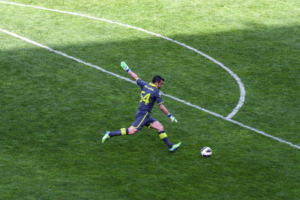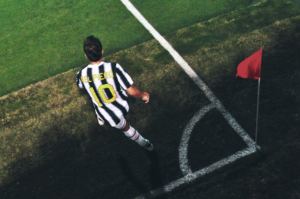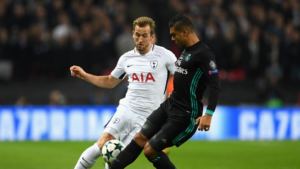Youth players are taught to prioritize individual skills training, but teamwork becomes crucial for a team’s success as players get older. Clear chances on goal only happen a few times a game. For the majority of a match, a team is going through different patterns of play to achieve the team’s match goal. A team must have a default style of play and sequences of passes mapped out, instructed to the players, and practiced on the training field until it is second nature. This repeated style is called a pattern of play.
Team Identity
A team can have more than one pattern of play or sets of patterns of plays. However, coaches and teams tend to gravitate towards the style that is most compatible with the players. For example, FC Barcelona is famous for its possession-based attacking game. Aside from the technical ability required of the whole team to play this style, each player has to know who their options are, at any one time, well before receiving the ball.
This example is just one of the many different systems and patterns of play used by professional and amateur teams worldwide. Patterns of play are a crucial building block of a team’s identity.
Fluid Patterns
Ideally, a team should have a solution to deal with every situation. Patterns of play must adapt to varying scenarios. For example, a team that just won possession of the ball has a different set of supporting options and space to launch an attack than a team that is starting an attack from the back. Patterns of play need to be designed in such a way as to play into a team’s strengths, maximize the efficiency of spacing on the field, and the stamina of its players.
"Today I understand that to become a great player you must have a ‘something [else]’ compared to others, as well as an immense talent and spirit of sacrifice."
For instance, a team that has just won the ball on the wing in its own half should set up in such a way to create options of going forward, back, and options to alleviate the immediate pressure from the opposition players who had just lost the ball. The team should move as a unit, keep the tactical shape and constantly analyze the scenario and deal with it accordingly.













